Learn why we all need to build a two-week emergency food supply and how to do it without busting your food budget. Plus, I share with you the easy way to calculate exactly how much food you’ll need without using complicated online food supply calculators.
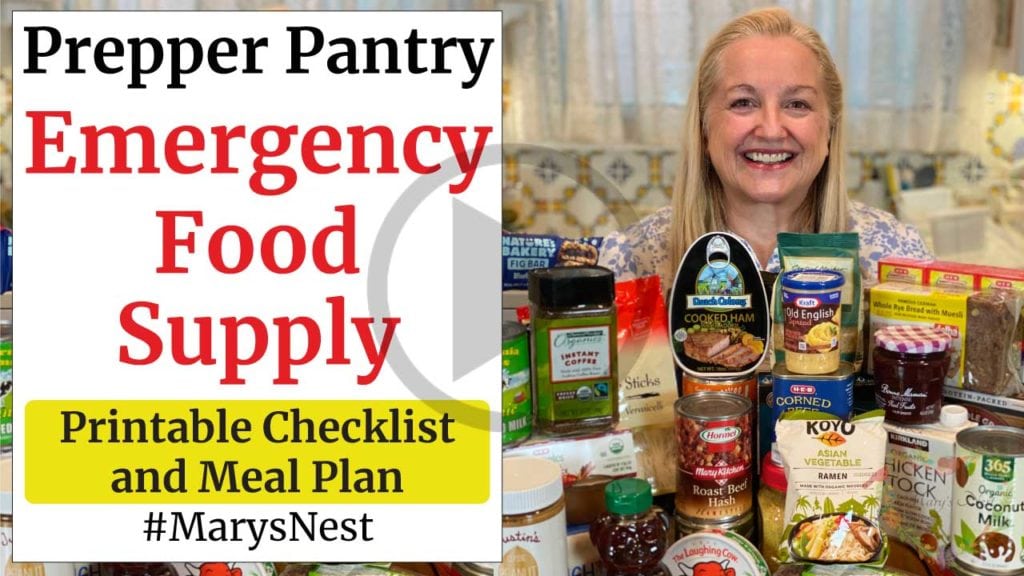
And be sure to download my special Emergency Food Supply PDF file that contains:
- Two Week Emergency Food Supply Shopping List
- Emergency Food Supply Weekly Meal Plan
Note that this is not a sponsored post. I bought and use everything I show you in my video and blog post.
Affiliates note: As an Amazon Associate I earn from qualifying purchases. My content may contain affiliate links to products and services. If you click through and make a purchase, I’ll receive a small commission. It does not affect the price you pay.
Table of Contents
- What is an Emergency Food Supply and Why We All Need One!
- How to Stay Within Your Food Budget
- Download Your FREE Emergency Food Supply Shopping List and Meal Plan
- The Modern Pioneer Cookbook
- Why a Two-Week Emergency Food Supply?
- What is a Four Corners Pantry?
- Download Your Free 36-Page Pantry List
- What is a Prepper Pantry?
- How Long Does Non-Perishable Food Really Last?
- How to Build Your Two-Week Emergency Food Supply
- How to Cook Food When There Is No Power
- General Supplies to Keep with your Emergency Food Supply
- Why Do You Need a Supply of Paper and Plastic Products?
- Don’t Forget Your Pup!
- What About Perishable Foods?
- More Prepper Pantry Videos
- Stocking the Pantry Recipes
- Pantry Recipes
- More Free Downloads
- Kitchen Academy Videos
- Shop for items used in this blog post or video
What is an Emergency Food Supply and Why We All Need One!
When we use the term “emergency food supply,” we refer to non-perishable foods that can be eaten or prepared when there is no electricity, no water, or no electricity and no water.
There are times when due to natural disasters or other calamities, we need to have emergency foods in our Four Corners Pantry. These emergency foods include:
- Foods we can eat without having to cook them.
- Foods we can prepare with a minimum amount of bottled water and warm over or in a:
- Cast-iron trivet, warmed with tea lights, or
- Chafing dish or fondue pot, heated with Sterno or other canned heating fuel.
What Emergency Foods Are Best to Stock?
You want to stock emergency foods that take very little preparation and can sustain you and your family through power outages and water shortages until conditions return to normal. These types of food include:
- Bottled water
- Canned protein items, including beans, chili, chicken, and fish
- Canned fruits and vegetables
- Crackers
- Dried fruits, nuts, and seeds
- Granola bars
- Instant oatmeal
- Peanut butter
- And other similar foods
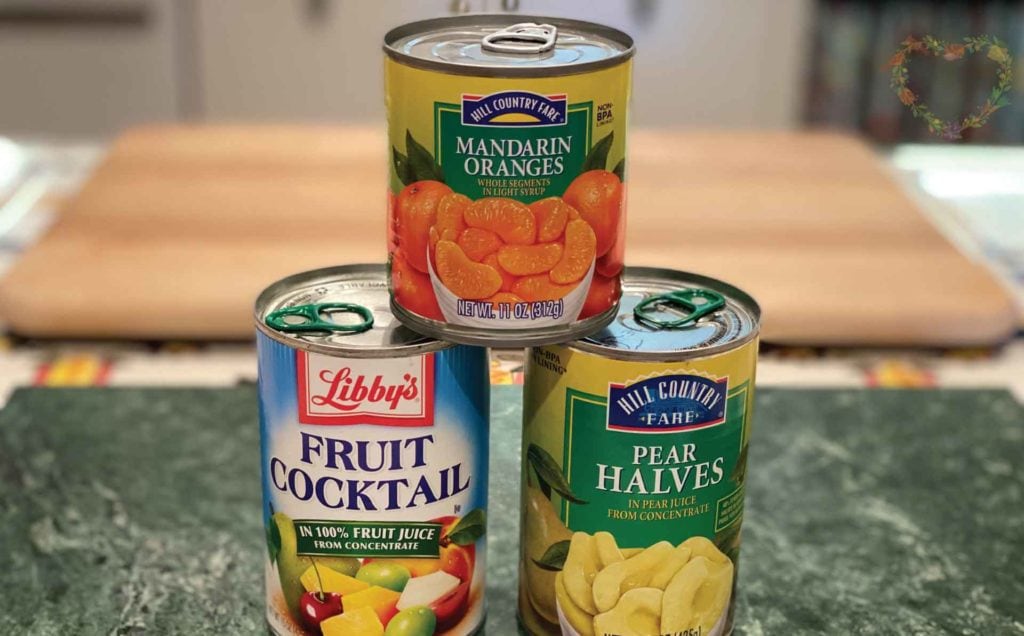
For a detailed list of emergency foods you need, be sure to download my special Emergency Food Supply PDF file. This file contains my printable Two Week Emergency Food Supply Shopping List.
How to Stay Within Your Food Budget
Keep in mind that you do not have to buy two weeks of emergency food in one shopping trip. Simply start by adding a few extra items to your shopping list each time you visit your grocery store. Before you know it, you will have created your two-week emergency food supply with easy-to-eat and easy-to-prepare foods.
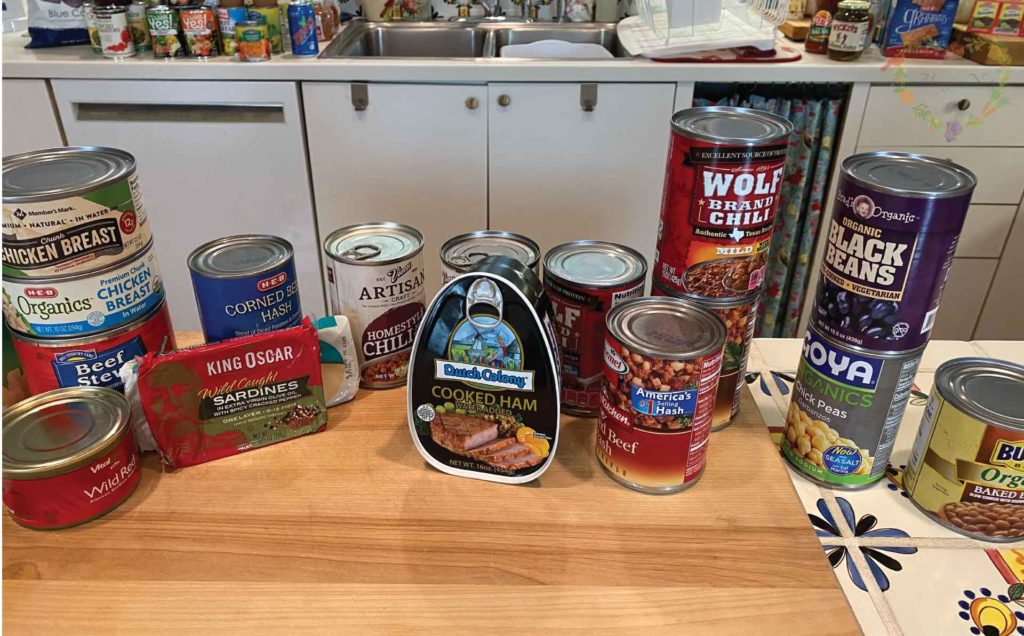
When stocking these emergency foods, you want to buy foods that are as minimally processed as possible. Look for foods that are nutrient-rich and not just full of empty calories. Don’t create a two-week emergency food supply with a bunch of junk food. Yes, junk food might fill your belly, but it will not nourish you and keep you healthy during an emergency period.
The good news about buying real food for your emergency food supply is that these foods are generally very cost-effective and are much more reasonable than processed foods. And remember, you DO NOT need to build your emergency food supply in one shopping trip! Instead, simply start adding to your stock little by little.
Plus, for extra savings, don’t forget to keep an eye open for in-store coupons and sale items. And be sure to check your grocery store’s clearance section. You may often find many a bargain there!
Download Your FREE Emergency Food Supply Shopping List and Meal Plan
To make things easy for you, I have prepared a free printable Emergency Food Supply PDF file that you can download.
This file contains the following content:
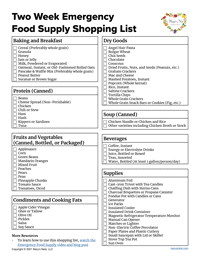
- Two Week Emergency Food Supply Shopping List. This checklist provides you with numerous categories of foods with various options to help you get started putting together your emergency food supply with real food.
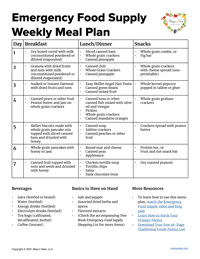
- Emergency Food Supply Weekly Meal Plan. This seven-day meal plan helps you put together meals using the foods you’ve stocked in your emergency food supply. Follow it for seven days, and if you are still under emergency conditions after one week, just start all over again with day one of the meal plan.
Why a Two-Week Emergency Food Supply?
In the United States, the Federal Emergency Management Agency (FEMA) encourages all Americans to create, at a minimum, a several-day emergency kit. This kit should include food and water to have on hand in the event of an extended emergency.
For more information, visit the following FEMA resources:
How Much Time Is Several Days?
Chances are, if you have ever lived through an emergency, you know that you are going to need several days of food, water, and supplies. But how many days are several days? In the past, experts have recommended emergency kits with three-day supplies of food and water.
However, after everything we have been through over the last year and a half, most of us have come to realize that we should keep at the very least a two-week emergency supply of food and water. And you’ll also want to include other supplies, such as medications and toiletries.
What is a Four Corners Pantry?
If you have been with me awhile, you know that I often use the term Four Corners Pantry. But if you are new here (welcome!), you may be wondering what exactly that is. A Four Corners Pantry refers to those areas in our home where we generally store food and related supplies, which include:
- Working Pantry (what you access every day)
- Refrigerator
- Freezer
- Extended Pantry (often referred to as a Prepper Pantry)
You can store your emergency food supply in both your Working Pantry and your Extended or Prepper Pantry. Here’s how to decide where to store your emergency foods:
- Prepper Pantry: Store those foods with a long shelf life, such as canned goods.
- Working Pantry: Store those foods that may have a shorter shelf-life, such as crackers.
Download Your Free 36-Page Pantry List
If you are new to the idea of stocking a pantry, be sure to download my FREE 36-page Essential Traditional Foods Pantry List eBook. (This comprehensive eBook is in addition to the free printable Emergency Food Supply PDF file that you can download from this blog post.)
This comprehensive eBook is especially helpful to those who are making the transition from a processed foods kitchen to a traditional foods kitchen. I include all the real foods that you will want to stock in your Four Corners Pantry with links to videos and printable recipes for how to prepare delicious and nutritious meals using the food in your pantry.
What is a Prepper Pantry?
A Prepper Pantry is that area of your home where you store non-perishable foods. This means you’ll want to keep your non-perishable emergency food supply in your Prepper Pantry. You can also use the supplies in your Prepper Pantry to restock your Working Pantry when the supplies in your Working Pantry run low.
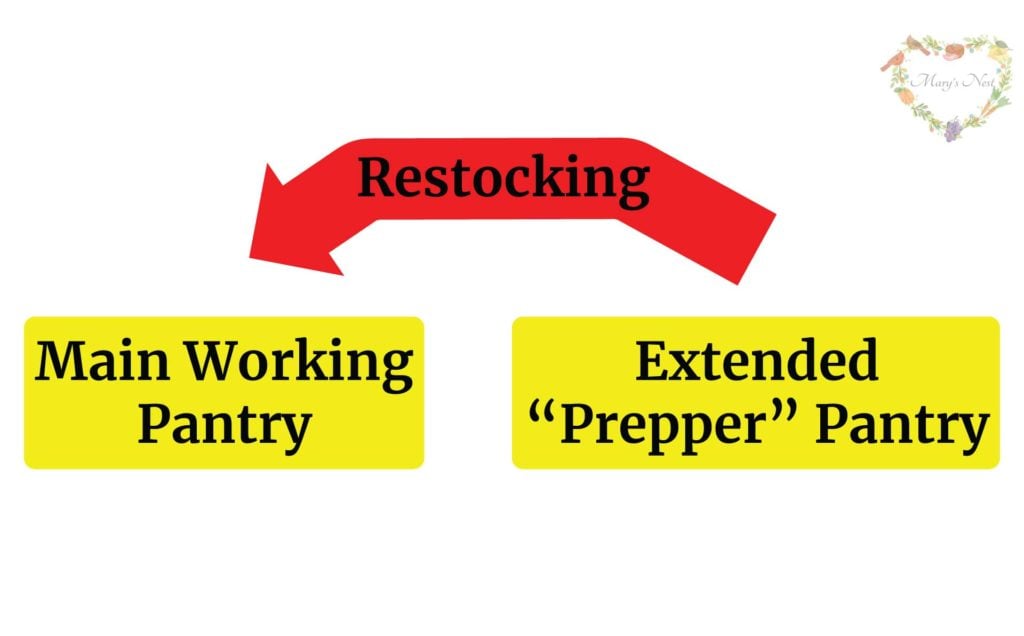
To restock your Prepper Pantry, take a regular inventory of your supplies, especially when you take items from your Prepper Pantry. Keep a list of the items you’re low on, so you can purchase them the next time you go grocery shopping or encounter an unexpected sale or coupon at the store.
And when you need to take items to restock your Working Pantry from the supplies in your Prepper Pantry, always make sure that you follow the first-in-first-out (FIFO) system. Use what you added to your pantry first that has the earliest use by or expiration date. This process will ensure that your food supply always stays as fresh as possible.
I talk about what a Prepper Pantry is and why we all need one in the following video.
How Long Does Non-Perishable Food Really Last?
As you stock your Prepper Panty and set aside a section for your emergency food supply, you may wonder how long certain foods stay fresh. The good news is that most non-perishable foods remain fresh long after their Best Buy date. As a matter of fact, according to the United States Department of Agriculture, “most shelf-stable foods are safe indefinitely.”
That’s great news for those of us who like to keep a well-stocked Prepper Pantry. But even though most non-perishable shelf-stable foods may be safe to eat well beyond their best-buy or use-by date, it would make sense that they would lose some of their nutritional value over time. So be sure to follow the FIFO system just to make sure that you are always eating food that is at its peak nutritional quality.
How to Build Your Two-Week Emergency Food Supply
When it comes to determining what you should stock in your two-week emergency food supply, the task can seem daunting. But don’t worry. There is an easy way to do this. You do not need to rely on the various online food calculators that ask how many adults and children are in your household and then decide what and how much food you should stock.
There are a few problems with these online food calculators. First, they really aren’t all that accurate, and they might overwhelm you with the large amounts of food they will calculate that you need. Plus, the foods they recommend might not be foods that you like to eat.
An Easier Way to Build Your Emergency Food Supply
Rather than making this an overwhelming or complicated task—or even an exercise in futility—there is a much easier way to calculate how much food you will need for your two-week emergency food supply.
Simply look at what you buy on a weekly basis and break your shopping list down into two lists:
- Non-perishable foods
- Perishable foods
Next, look at your list of perishable foods and think of non-perishable replacement options. For example, if you normally buy fresh chicken, replace it with canned chicken.
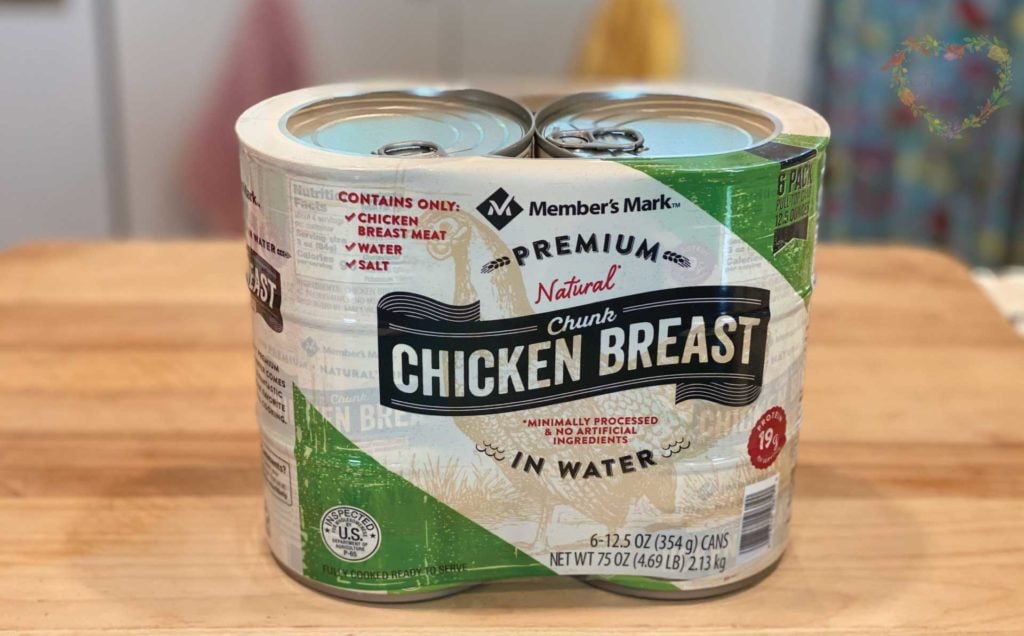
As you think of non-perishable items to replace your perishable grocery items, add them to your non-perishable grocery list. After you go through this process, you’ll have created your Prepper Pantry shopping list. However, for your two-week emergency food supply, you need to take one more step.
Eliminate Foods That Require Significant Cooking
Next, eliminate those foods on your non-perishable grocery list that require significant cooking that would be difficult without power and water. For example, you’ll want to eliminate the following foods:
- Dried beans
- Regular rice (as opposed to quick-cooking parboiled rice that you can typically warm over a trivet or similar device)
- Steel-cut oats and oat groats
- Whole grains
Now, you have your one-week emergency food supply list, and all you need to do to create your two-week emergency food supply list is to double your one-week list.
How to Cook Food When There Is No Power
When it comes to preparing food in an emergency situation that leaves us without power or running water, you have multiple options. However, what you can choose from depends on where you live and the weather conditions in your area.
Certainly, if you live in a warm-weather climate having an outside grill or sun oven can make cooking food easy. You can even crank up the grill in colder climates, too, when the weather conditions are right.
So What Are My Options?
But many of you have shared with me that you are very limited in the options available to you where you live. For example, you may not have the space for an outside grill, or you may live in an apartment that imposes further limitations.
I understand completely! The good news is that if you prepare efficiently when putting your emergency food supply together, you will have foods that do not require being warmed or can be done so easily.
However, if you want to keep some supplies on hand for warming food, you have a number of options, including:
- Cast-Iron Trivet (heated with tea lights)
- Chafing dish (heated with Sterno or other canned heating fuel)
- Fondue pot (heated with Sterno or other canned heating fuel)
Can a Cast-Iron Trivet with Tea Lights Warm Food?
A cast-iron trivet with a tea light can supply a surprising amount of heat to warm canned food and heat water for tea or instant coffee. It may even get warm enough to perk coffee in an old-fashioned coffee pot. Or even make Italian espresso!
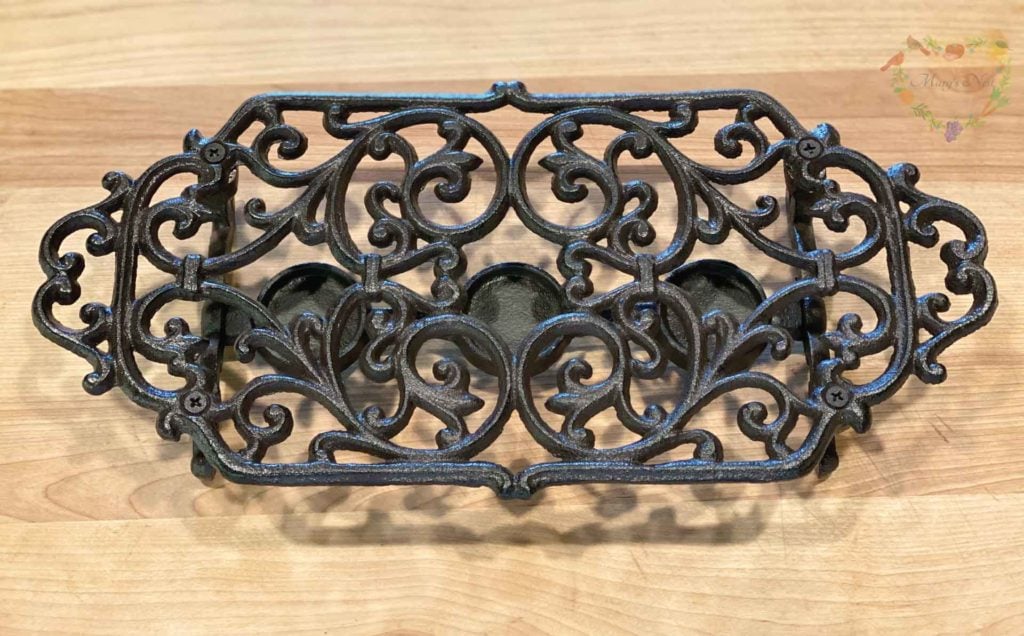
You can use the tea lights in the trivet to warm water in batches. With each batch, you can add the hot water to an insulated drinking container. This enables you to always have warm water available to make a cup of tea or instant coffee.
Your stored warm water can also come in handy when you want to warm some food in a skillet or saucepan over the trivet to help cut down on the heating time.
Can a Tea Light Generate Enough Heat?
If you are still skeptical and think that a trivet with a tea light might not generate a lot of heat, you will be amazed!
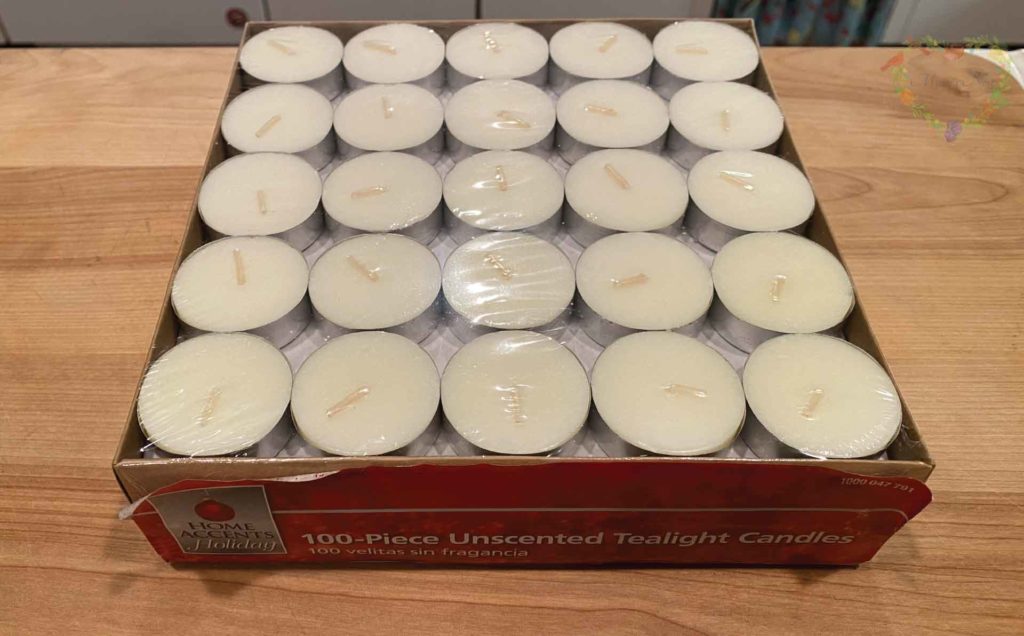
As a matter of fact, the United States Government, as part of their preparedness information at ready.gov, shows how to warm canned food using a trivet with a tea light (referred to as a “candle warmer”), a chafing dish, a fondue pot, or if you have one, a fireplace!
How to Easily Warm Canned Food
For example, here’s how you can warm a can of baked beans over a cast-iron trivet with lit tealight candles:
- Remove the label from the can.
- Wash the can.
- Use your manual can opener to remove the lid of the can.
- Place your can onto the warmed trivet. (You can leave the can uncovered or top it with a bit of aluminum foil.)
- Allow the food inside the can to warm.
Use a potholder or an oven mitt to remove the can from the trivet and transfer the food to a paper bowl. Or you can even eat it right out of the can. (Just be careful not to burn yourself on the hot can!)
How to Cook Dry Foods
Ready for some pancakes, skillet spaghetti, or mac and cheese? You can easily make these dishes using items from your emergency food supply using a tea light trivet (or chafing dish or fondue pot).
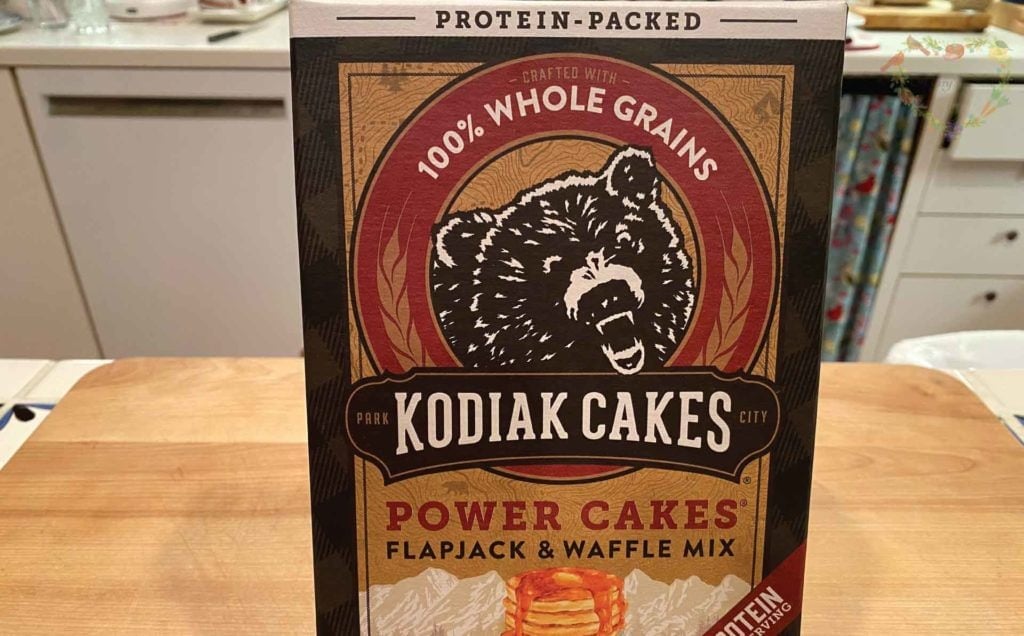
Pancakes
You can make pancakes in a small non-stick skillet placed over a trivet with tea lights.
- Add a dollop of ghee into your skillet and let it melt.
- Pour in the pancake batter that you have prepared from your boxed mix by simply adding water.
- Cook your pancakes on each side for about 2 minutes
- Enjoy! You’ll never know that you cooked them over a trivet…they’ll be delicious!
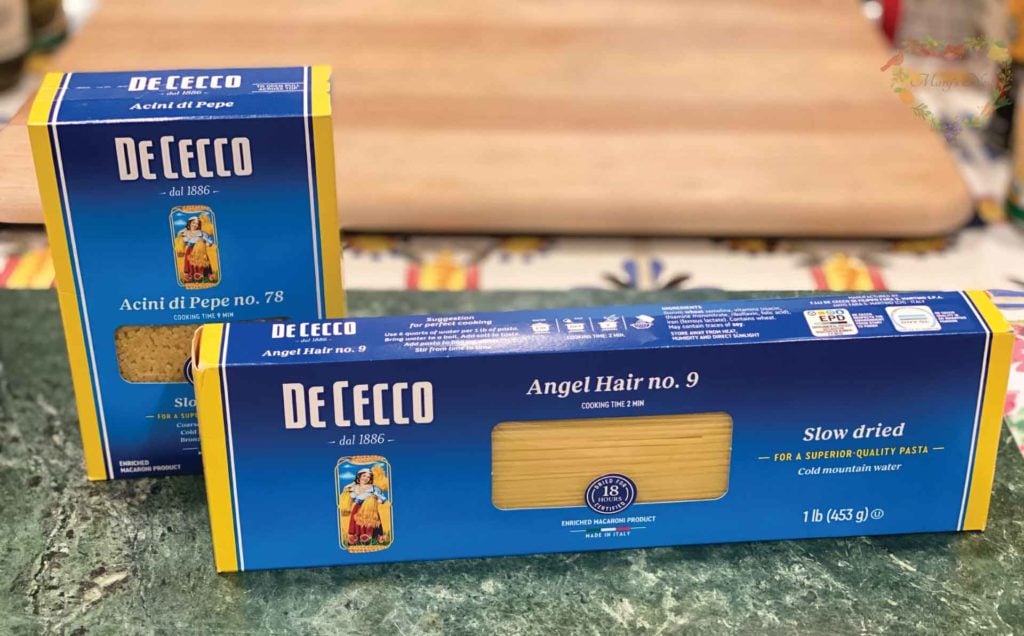
Skillet Spaghetti
If you have a hankering for spaghetti, that’s easy to make too!
- Warm some angel hair pasta in a small skillet with some bottled water over a tea light trivet.
- Once the water warms, the pasta will soften. (It should be ready in about two minutes.)
- Once the pasta has softened, toss it with some jarred spaghetti sauce or pesto sauce.
- Enjoy! You’re all set to eat!
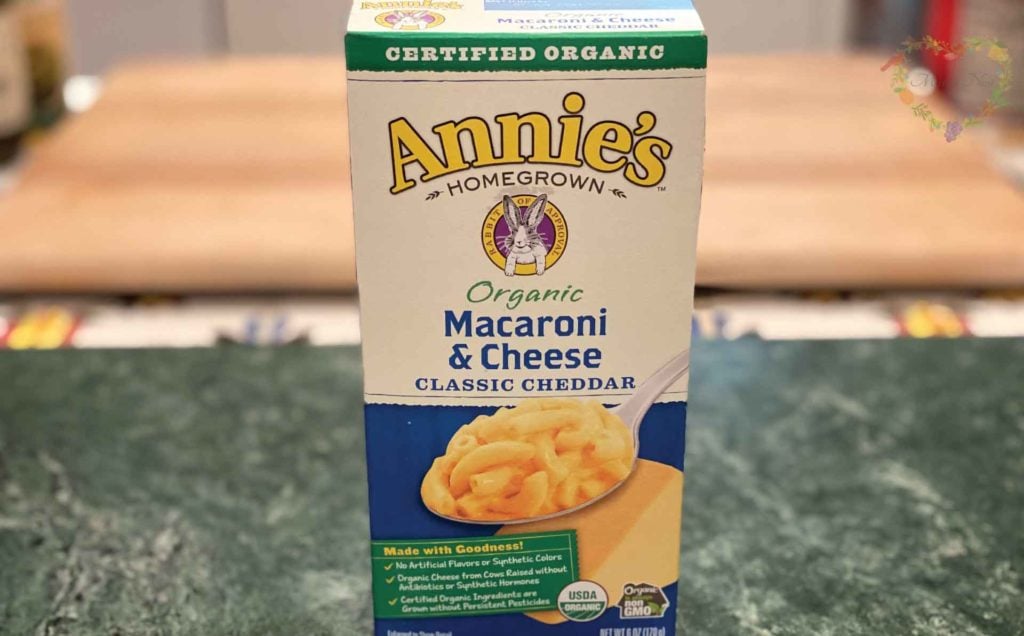
Mac and Cheese
You can prepare boxed mac and cheese in a similar way as you would prepare your pasta.
- Heat some water over your tea light trivet in a small saucepan or a skillet.
- Add the macaroni and simmer till tender.
- Drain the water, and add in your packaged cheese powder, some reconstituted dry milk powder or evaporated milk, and a bit of ghee (clarified butter).
- Enjoy! You’ve created a delicious bowl of mac and cheese!
Have a Fireplace?
Do you have a fireplace? If so, be sure to add an old-fashioned popcorn maker to your supplies. With this handy device, you can make popcorn in no time at all!
General Supplies to Keep with your Emergency Food Supply
When it comes to stocking your two-week emergency food supply, you also want to ensure you have certain cooking and dining supplies on hand. At a minimum, these include:
- 2-Quart Saucepan
- Aluminum foil
- Battery-powered external fridge thermometer monitor
- Cast-iron trivet with tea lights
- Dehydrating
- Fondue pot or chafing dish with Sterno or another heating device
- Insulated beverage container
- Insulated cooler(s) and ice packs
- Manual can opener
- Matches or lighter
- Paper plates and cups
- Plastic cutlery
- Potholders or oven mitts
- Small non-stick skillet
- Stovetop teapot or coffee percolator
And don’t forget to download your Emergency Food Supply Weekly Meal Plan. Be sure to print out a copy to keep with your 2-week emergency food supply.
Why Do You Need a Supply of Paper and Plastic Products?
Although paper plates and plastic utensils may not be particularly economical, when water is at a premium you do not want to be wasting water to wash dishes.
And if during an emergency you find yourself having to care for someone who is sick, paper goods will be the most sanitary since you might not be able to get your water hot enough to sanitize regular plates, glasses, and cutlery.
Don’t Forget Your Pup!
When it comes to creating your emergency food supply, don’t forget about your pets. Make sure you have enough pet food, medications, and supplies to see you through for at least two weeks.

If you have a dog who is used to nice long walks, you may not be able to take your dog outside in an emergency situation. So be sure to have some special easily digestible rawhide-free chews and fun stick-like chew toys on hand to help keep them occupied and burn off some energy.
Also, be sure to check with your vet for other ideas for keeping your pets well-fed, occupied, and generally calm and healthy during emergencies.
For even more helpful ideas for how to best care for your pet during an emergency, check out the U.S. Government’s pet preparedness plan.
What About Perishable Foods?
Whenever the power goes out, most of us immediately think about our refrigerator and how long our food will stay cold. A general rule of thumb is that once the temperature in our refrigerators reaches 40°F, our food is going to start to spoil and begin to develop bad bacteria.
How to Monitor the Temperature in Your Fridge
To know exactly what the temperature in your refrigerator and freezer is when the power goes out (and stays out!), be sure to add a Wireless Fridge and Freezer Exterior Thermometer to your Prepper Pantry supplies. (The link goes to a newer version of the temperature sensors that I have in the following picture.)
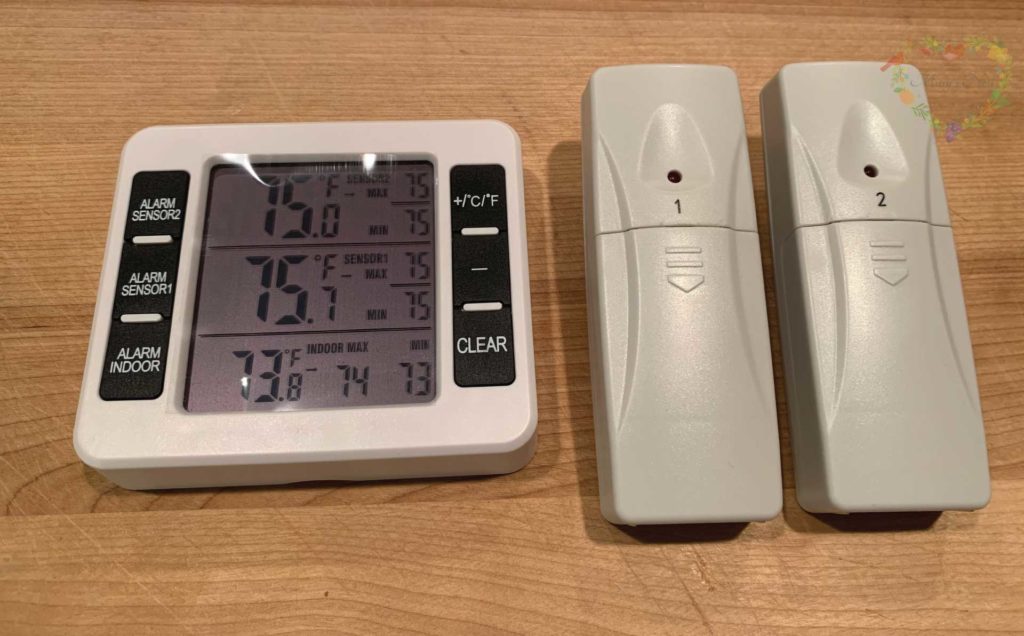
Place one of the sensors in your refrigerator and the other in your freezer. The battery-powered temperature display attaches with magnets to the outside of your refrigerator and supplies a reading from the sensors in your refrigerator and freezer. You will know exactly when your refrigerator interior reaches 40°F. When this happens, you will want to use up as much of your perishable foods as possible.
And if you have to move your food from your refrigerator to an insulated cooler, you can move one of the sensors too so you can keep track of the temperature in your cooler. This device is quite clever!
How to Save Perishable Foods
One of the first things you want to do when you lose power is to consume your perishable foods first. However, for perishable foods that can’t be consumed immediately (because they may require significant cooking), you want to try and store them in a cooler with ice packs.
If the exterior temperature is below 32°F, your frozen food will stay frozen with your cooler outside. But if not, just use the ice packs that you had previously kept frozen in your freezer for both your refrigerated perishables and your frozen food. Hopefully, your power will be restored before your perishables spoil.
This is exactly what we had to do to save some of our refrigerated foods when we lost power during the terrible Texas weather in early 2021.
More Prepper Pantry Videos
I hope this information on how to build a two-week emergency food supply will prove helpful to you. If you would like to learn more about how to start or expand your Prepper Pantry, be sure to watch my special series below. I show you how to stock your Prepper Pantry with real food, and how to do this on only $5 per week extra added to your grocery budget.
And when it comes to storing the food in your Prepper Pantry to guarantee maximum shelf life, check out my videos on the best storage containers and how to use them.
Stocking the Pantry Recipes
When it comes to stocking your Four Corners Pantry, you do not need to buy everything at the grocery store. There are actually a lot of things you can make homemade. In the videos below, I share with you how to make your own flavored extracts, including vanilla extract, and apple cider vinegar.
- How to Make Homemade Extracts – Flavored Extracts – Baking Basics
And when it comes to seasoning mixes, there is never a need to buy these pre-made. In the video below, I show you how to make a variety of seasonings that can be used in a number of different ways, including homemade salad dressings!
Pantry Recipes
When it comes to using the foods that your store in your Working Pantry and your Prepper Pantry, I have an easy a 10-Minute Chicken Tortilla Soup that uses all canned foods to prepare. (I mention this recipe in my Emergency Food Supply Weekly Meal Plan, which is part of the special PDF you can download.)
More Free Downloads
How to Make Meal Prep Fast with the Meal-in-a-Bag System
Make meal prep fast and easy with these seven free recipes you can download and print out to create your own Meals in Bags.
The FREE Modern Pioneer Cookbook Curriculum – Teach Traditional Cooking Skills to Grades K-12
This cookbook curriculum gives students a love of traditional foods and kitchen skills that will last them a lifetime.
How To Build Your Great Depression Pantry
Download my free Great Depression Pantry Shopping Guide to identify the Depression Era Foods you need to stock to weather difficult times.
Kitchen Academy Videos
Are you looking for more traditional foods videos? If so, I invite you to join the Traditional Foods Kitchen Academy. Members of this optional paid YouTube community get access to exclusive videos, live streams, and other members-only perks. Plus, your YouTube comments include a special members-only badge.
In the following members-only video, I talk about Stocking the Traditional Foods Pantry.
Stay in Touch with Mary’s Nest
- Subscribe to My YouTube Channel for Traditional Foods Videos (Free) - When you subscribe, be sure to click on the notification bell that will let you know each time I upload a new video.
- Subscribe to Mary’s Traditional Foods Newsletter (Free) - Get a free 36-page eBook for signing up: How to Stock Your Essential Traditional Foods Four-Corners Pantry.
- Join the Traditional Foods Kitchen Academy - For more detailed videos and exclusive members-only perks, join my YouTube membership community.
- Order The Modern Pioneer Cookbook - Get a hardcover book of Mary's nourishing recipes from a Traditional Foods Kitchen. This bestselling cookbook is published by Penguin Random House with their DK imprint.
- Preorder The Modern Pioneer Pantry - Be one of the first to get Mary's hardcover book about preserving food and making delicious meals from your Four Corners Pantry. Mary's second cookbook is also published by Penguin Random House.
I look forward to having you join me in my Texas Hill Country Kitchen!
Shop for items used in this blog post or video
Favorite Emergency Supplies
- Cast-Iron Trivet
- Tea Lights
- Chafing Dish
- Sterno
- Fondue Pot
- Fondue Pot Heating Gel
- Wireless Fridge and Freezer Exterior Thermometer
- Manual Can Opener
- Long Lasting Ice Packs
- Igloo-type Cooler
- Water BOB Tub Liner
- Small Non-Stick Skillet
- Small Saucepan
- Excalibur 9-Tray Food Dehydrator
- Excalibur Silicone Sheets
- Lodge 10″ Cast Iron Skillet
- Country Living Hand Grain Mill
- All American Pressure Canner
- Victoria Stove-Top Waterbath Canner
- Ball Electric Water Bath Canner
- All American Sun Oven
Favorite Storage Supplies
- 5 Gallon Buckets with Lid
- Bucket Lid Opener Tool
- Gamma Lids – White
- Gamma Lids – Multi-Colored
- Bay Leaves
- 5 Gallon Mylar Bags
- 1 Gallon Mylar Bags
- Zipper Mylar Bags
- Half Gallon Canning Jars
- Leak Proof/Air Tight Jar Lids
- 300CC Oxygen Absorbers
- 500CC Oxygen Absorbers
- 5g Silica Gel Packs
- 10g Silica Gel Packs
- Handheld FoodSaver with Docking Port
- Handheld FoodSaver
- FoodSaver Handheld Vacuum Sealing System
- FoodSaver Vacuum Lids
- BIC Mark-It Permanent Marker
- FoodSaver Jar Adapter Kit
- Foodsaver Vacuum Sealer
More Kitchen Supplies with Discount Codes
- Mockmill Grain Grinder and Whole Grains (including Einkorn, Emmer, and Spelt)
Learn more about Mockmill electric grain mills for making fresh flour and their Flake Lover's Flaker that flakes whole grain in minutes.
Use promo code MARYSNST for a one-time 15% off Masontops and Breadsmart products on Amazon.com.
Amazon Shop and Shopping Guide
- Visit Mary’s Nest Amazon Shop
- Visit my Shopping Guide page
Get up to 15% off for stocking your Traditional Foods Pantry and equipping your Modern Pioneer Kitchen, including discounts from US Wellness Meats, Farmhouse Teas, Lehman's, Masontops, Cultures for Health, Survival Garden Seeds, Redmond Real Salt, Plan to Eat, and More!
Recommended Reading
- The Modern Pioneer Cookbook
- Nourishing Traditions
- Emergency Food Storage & Survival Handbook: Everything You Need to Know to Keep Your Family Safe in a Crisis
- Prepper’s Pantry: Build a Nutritious Stockpile to Survive Blizzards, Blackouts, Hurricanes, Pandemics, Economic Collapse, or Any Other Disasters
- Food Storage 101 Where do I begin? (Cookin’ With Home Storage)
- Self-Reliance: Recession-Proof Your Pantry
Disclaimer:I am not a medical doctor, a medical professional, a dietician, or a nutritionist. All content found on the MarysNest.com website, including text, images, videos, eBooks or eGuides, social media, or other formats, were created solely for informational purposes only. The content is not intended to be a substitute for professional medical advice, diagnosis, or treatment. Always seek the advice of your physician or other qualified healthcare provider with any questions you may have regarding a medical condition or proper nutritional advice. Never disregard professional medical advice or delay in seeking it because of something you have watched in a video or read on this website. Use caution when following the recipe in this video. The creator and publisher of this video and website will not be held responsible for any adverse effects that may arise from the use of this recipe and method or any other recipe and method on this website or corresponding video channel.


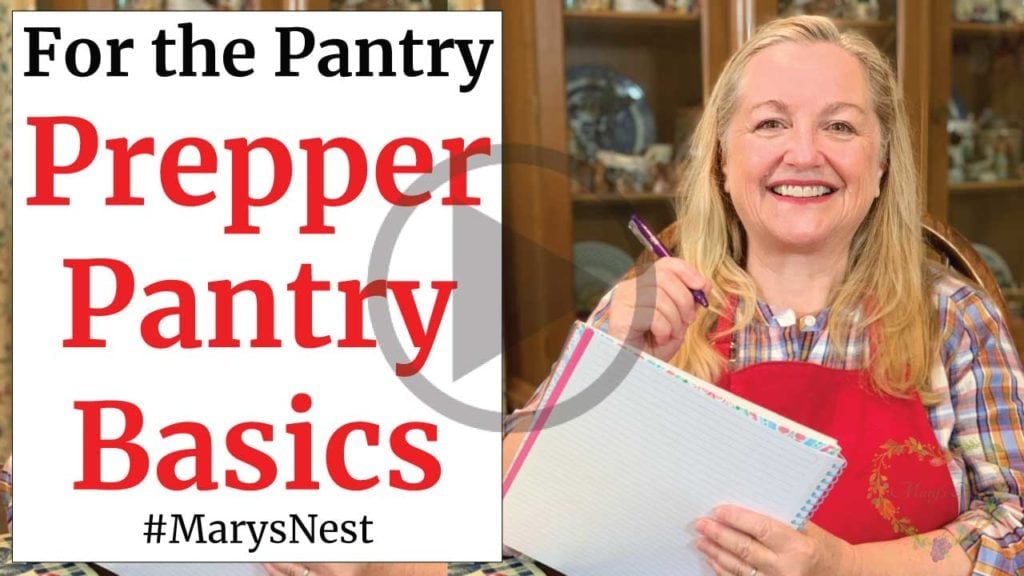

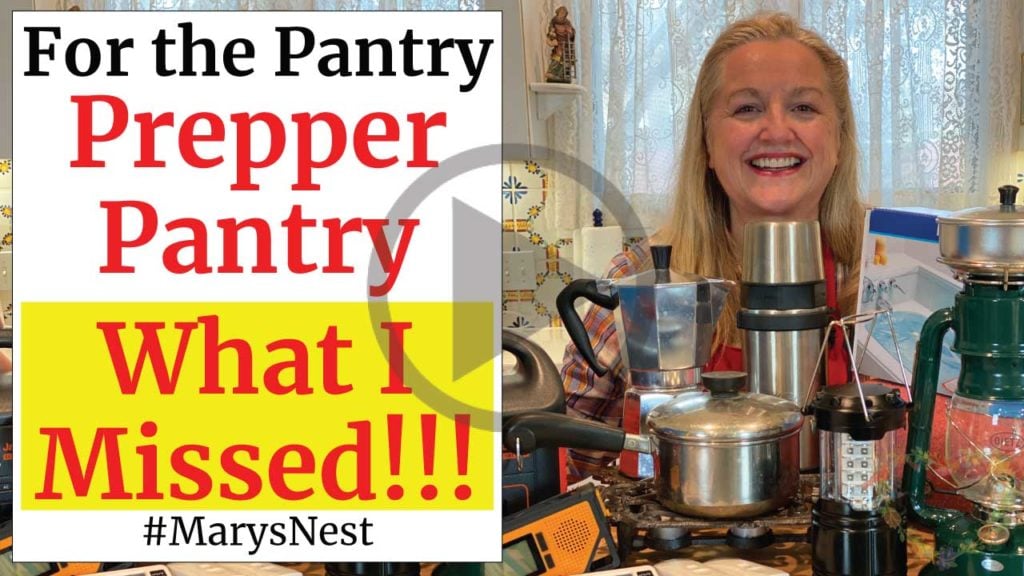
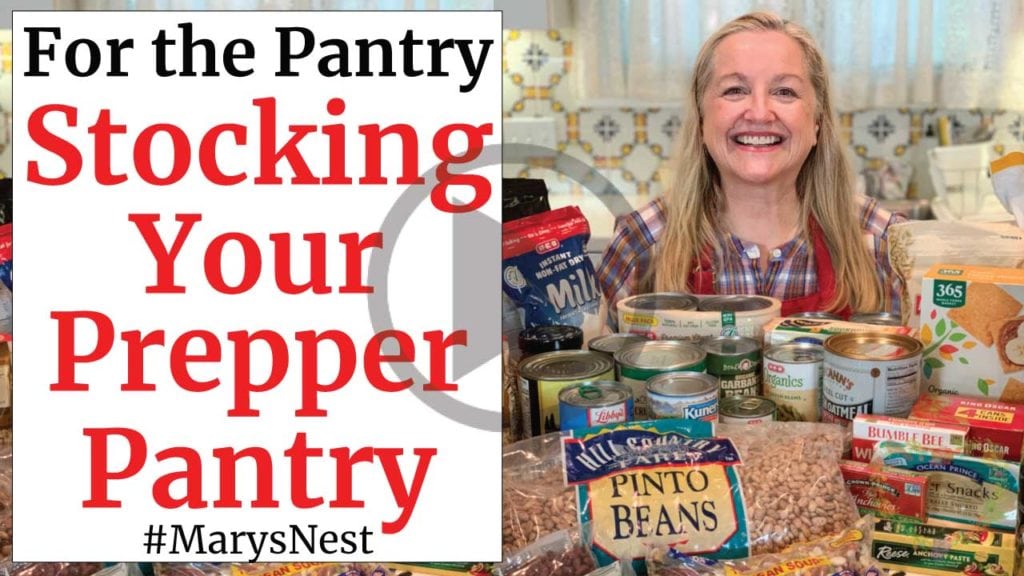
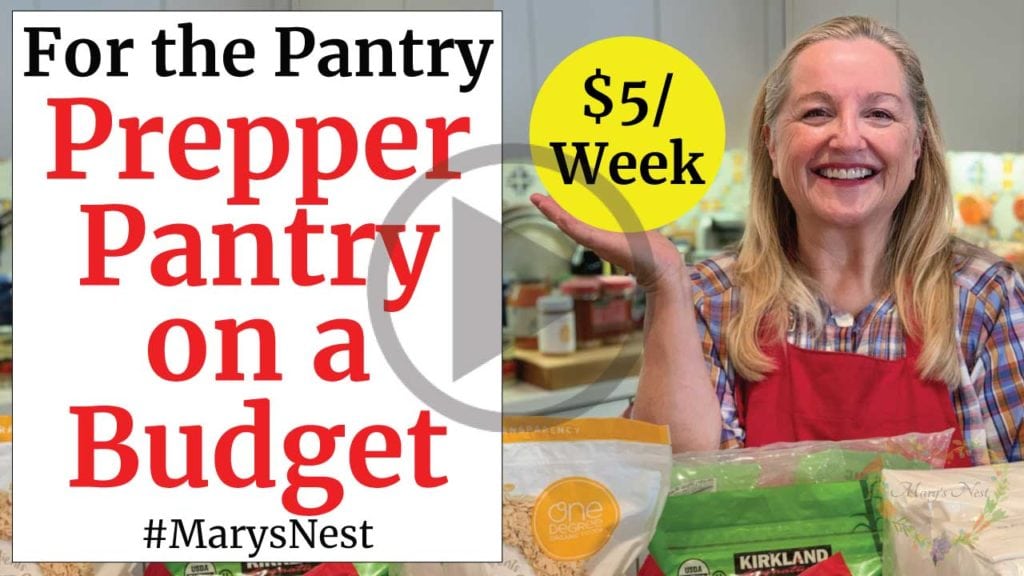
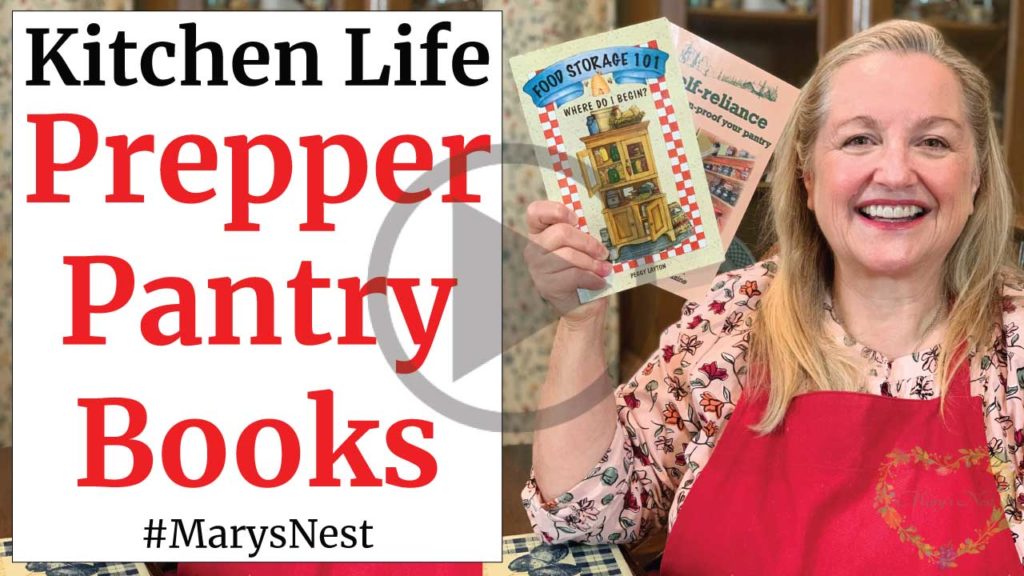
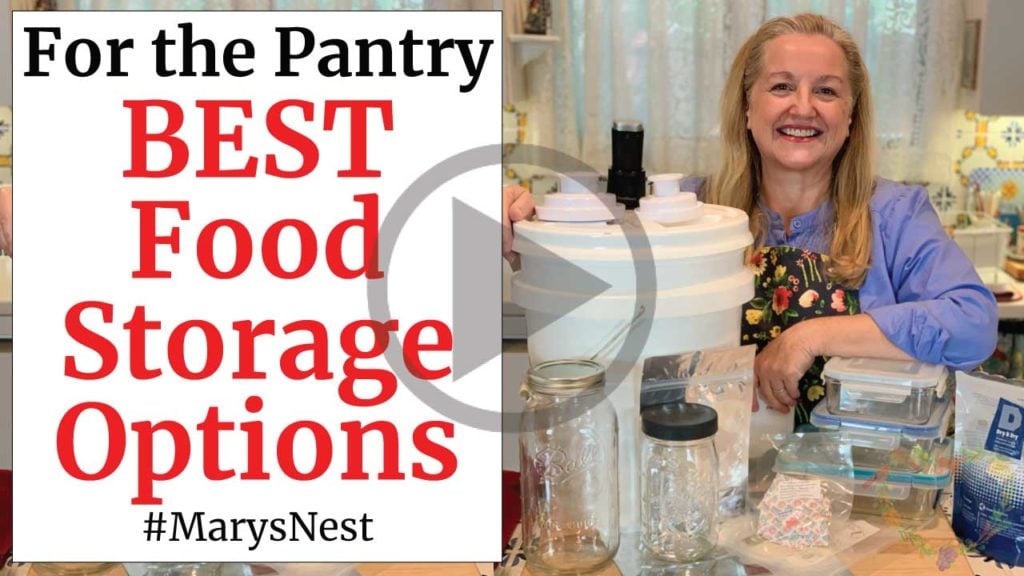
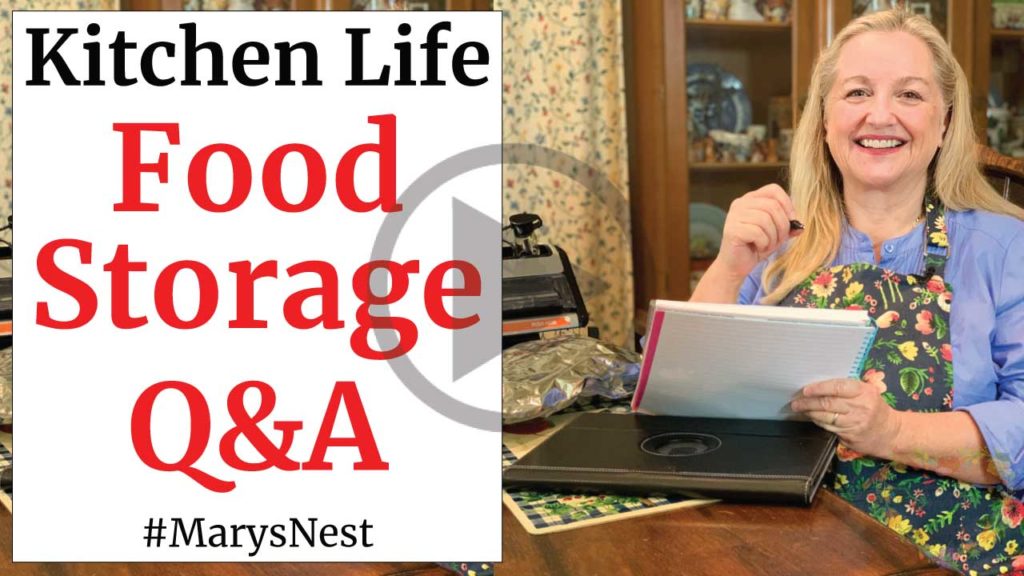










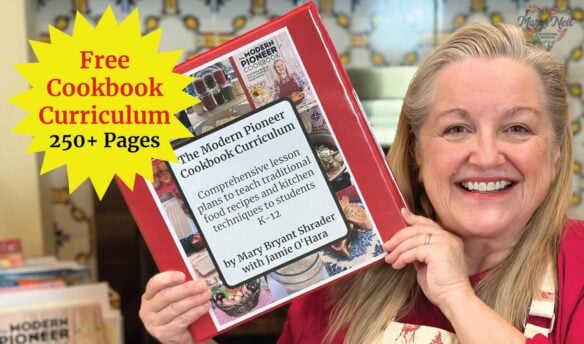

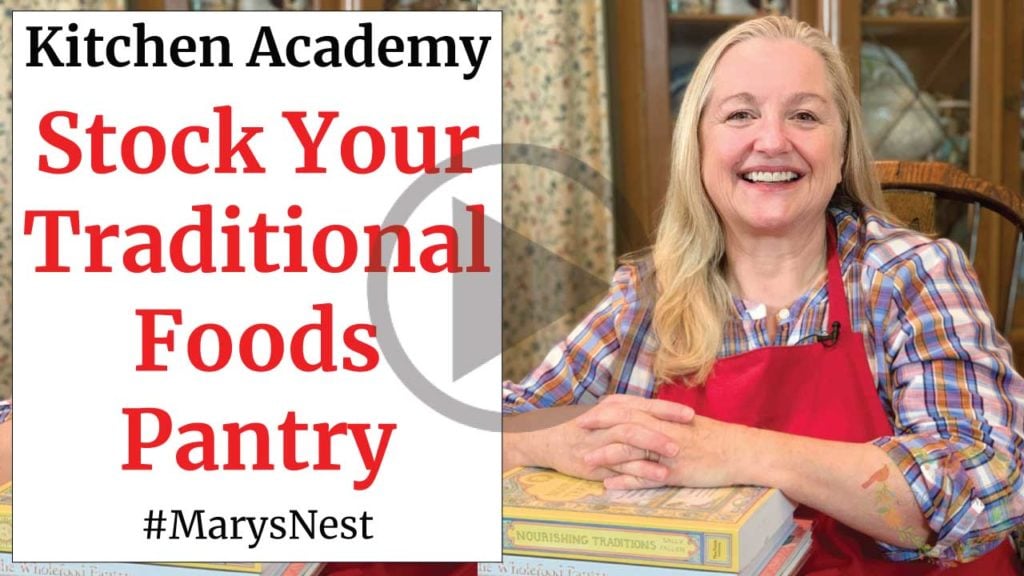


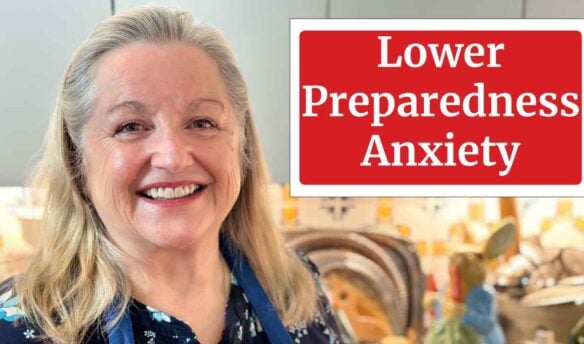
I found out how easy it is to use a Crockpot to cook any noodles or pasta in a sauce. My friend did that and I bought a mini Crockpot at Family Dollar, it takes only 15-20 minutes to cook thoroughly. I haven’t tried rice yet, but will very soon. I got the idea from Hamburger Helper, but didn’t want to buy that product because it has too much salt and chemicals. Also I can add whatever seasonings or spices I like and make it my own.
Hi Anne, What a great idea! Thanks for the tip!! Love, Mary
My biggest problem is that my nephew and I eat differently to some extent. He doesn’t eat pork and I love ham, pork chops, pork loin, and bacon. I’m going to buy some individual drinks for emergencies, Sunny D, Yoohoo chocolate drinks, and several others. I’m choosing the type of bottles that can be washed out and reused. Also will buy some grain bars too for snacks. Our local Dollar General has Chunky soups on sale and that’s when I buy them. I’d like to buy them from Walmart because they have a bigger selection than DG or our local food store. Thank you for having a written list that I can use to start building my supplies. God bless you and your family.
Hi Anne, Thanks for sharing a little bit about your shopping habits. Sharing tips like this always helps others. Love, Mary